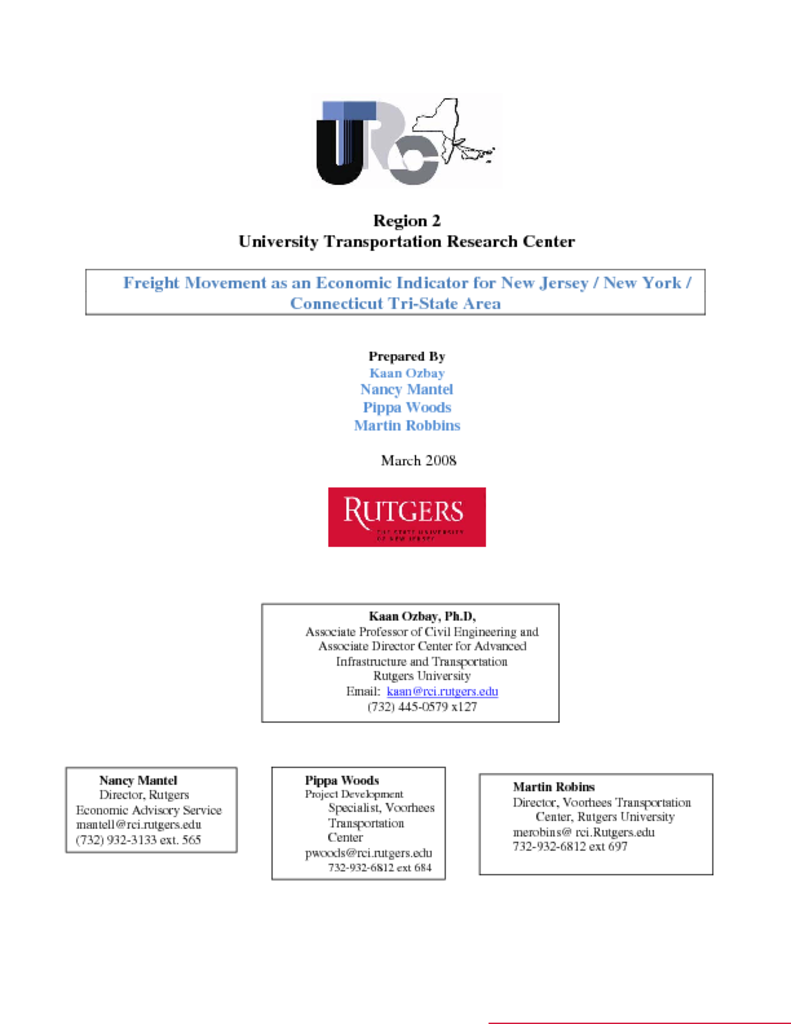There is a large body of literature that studies the impact of transportation investment on the economy, mainly in the mid to long term. However, there is a potential to track the performance of the economy, to increase understanding of the short-term relationships among different sectors of the economy, and to forecast the performance of the economy-- particularly its business cycles--through the effective use of monthly transportation-related indicators in addition to other traditionally used economic indicators. Some traffic data, such as vehicle volumes and vehicle miles traveled, can now be measured quite accurately and almost in real time using emerging technologies such as Automatic Vehicle Identification (AVI) and Geographic Positioning Systems (GPS). Until now freight movements were not included among these economic indicators. Preliminary work suggests that a freight indicator when used with other economic indicators could produce a better understanding of the current and future course of the economy. The movement of a freight index over time can be compared with other economic measures to understand the relationship of transportation to changes in the regional economy. To the extent that an indicator is a leading indicator it foreshadows changes in GDP—that is, when it goes up, GDP tends to go up some time later; when it goes down, GDP tends to eventually drop. Leading indicators are especially useful in forecasting turning points in the economy, and are therefore of particular interest for short-term economic decision-making. The main purpose of this project is to investigate the relationship between truck movements and the economic performance of New Jersey, thereby, to test whether truck movements on the I-95 Corridor (NJ Turnpike) are a leading indicator of changes in the performance of the New Jersey economy. The models produced in this study are promising in terms of developing a useful prediction methodology for the economic activity in New Jersey. This study showed that truck data collected by NJTA can be used for various important objectives such as the one studied in this project. The results of this study may also be used to inform the NJ state forecasting model (R/ECON) maintained at Rutger’s Center for Urban Policy Research. However, more research and development are needed to further operationalize the models proposed in this study.




